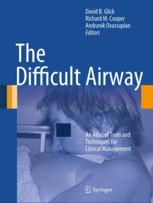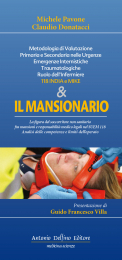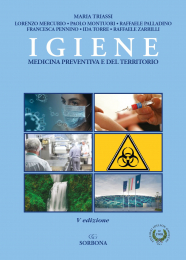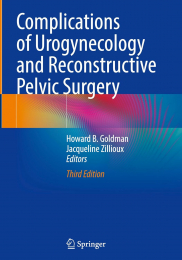Non ci sono recensioni
- Chapters are correlated to the ASA algorithm
- Numerous full color illustrations provide step-by-step instruction
- Written by experts in the field
The Difficult Airway provides comprehensive textual and visual coverage of how to deal with patients who have expected or unexpected difficult airways.
The book begins with a review of current definitions of the difficult airway, its incidence, and the evolution of algorithms to facilitate its management. The chapters that follow offer a comprehensive update on the techniques and concepts described in the American Society of Anesthesiologists’ Difficult Airway Algorithm. Noted experts in each of the techniques have been recruited by the book editors to present the information. Figures throughout the book illustrate important points and procedures.
This is a wonderful resource for health care professionals who are concerned with the management of the difficult airway, including anesthesiologists, intensive care physicians, emergency room physicians, nurses, and out-of-hospital first responders.
xi
Contents
Preface ................................................................................................ vii
Acknowledgements ............................................................................ ix
Contributors ....................................................................................... xvii
1 The Difficult Airway: Definitions
and Algorithms ................................................................... 1
Zdravka Zafirova and Avery Tung
Introduction 1
Definitions 2
Incidence 3
Algorithms for Addressing the Difficult Airway 4
Conclusion 9
References 9
2 The Expected Difficult Airway ..................................... 11
Satya Krishna Ramachandran and Sachin Kheterpal
Introduction 12
Anatomy of the Difficult Airway 12
Factors Affecting Tongue-Pharyngeal Volume Disproportion 13
Factors Affecting Access to the Upper Airway 13
Factors Affecting Laryngoscopic Visualization Vector 14
Factors Affecting Laryngeal Structures 19
Anatomy and Physiology of the Compromised and Critical Airway 19
Clinical Assessment of the Airway 21
Systemic Conditions 22
Airway Tumors 23
Upper Airway Infections 25
Specific Airway Assessment 26
Measures of Tongue-Pharyngeal Volume Disproportion 26
Measures of Laryngoscopic Visualization Vector 27
Other Airway-Related Tests 27
xii
CONTENTS
Clinical Prediction of the Difficult Airway 28
Clinical Prediction of Difficult Intubation 28
Clinical Prediction of Difficult Mask Ventilation 29
Difficult Mask Ventilation Combined with Difficult Intubation 29
Clinical Prediction of Need for Awake Surgical Airway 29
Summary 30
References 30
3 The Role of Awake Intubation ..................................... 33
P. Allan Klock Jr.
Introduction 33
Indications for Awake Intubation 35
Contraindications to Awake Intubation 36
Advantages of Awake Tracheal Intubation 36
Keys to Successful Awake Intubation 37
Psychological Preparation 37
Dry the Airway 37
Supplemental Oxygen 37
Anxiolysis and Sedation 38
Anesthesia of the Airway 38
Applied Airway Anatomy 39
Topical Anesthesia of the Tongue 39
Intubating the Trachea 45
References 46
4 Unanticipated Difficult Direct Laryngoscopy:
Methods to Improve Its Success ......................................... 47
Mark E. Nunnally and Michael R. Hernandez
Introduction 48
Lingual Tonsil Hyperplasia 49
Copious Blood and Secretions 49
Blades 49
Shape 49
Construction 52
Lights 52
Adjuncts to Direct Laryngoscopy 53
Stylets and Introducers 53
Laryngoscope Optical Modifications 54
Technique of Direct Laryngoscopy 54
Sniffing Position 55
Head Extension 55
Neck Flexion 55
Obesity and the Sniffing Position 56
Laryngeal Manipulation 56
Cervical Spine Injury 58
Techniques for Difficult Laryngoscopy 59
Complications 60
Conclusion 60
References 60
xiii
CONTENTS
5 The Role of Rigid Fiberoptic Laryngoscopes ................ 65
Richard M. Cooper
Introduction 65
Limitations of Direct (Line-of-Sight) Laryngoscopy 66
Rigid Fiberoptic Laryngoscopes 66
UpsherScope 67
WuScope™ 67
Bullard 68
Truview EVO2™ 73
Conclusion 74
References 74
6 Role of Rigid Video Laryngoscopy ................................ 77
Richard M. Cooper and Corina Lee
Introduction 77
Channeled Scopes 78
Airtraq 78
Pentax AWS100 84
Non-channeled Scopes 87
GlideScope™ Video Laryngoscope (GVL™) 87
Visualization 92
ETT Delivery 93
ETT Advancement 94
Clinical Applications 95
McGrath® Series 5 99
Clinical Applications 101
Video Macintosh/C-MAC 102
Conclusion and Future Directions 106
References 107
7 The Role of the Supraglottic Airway ........................... 113
Irene P. Osborn
Introduction 113
Basic Use 115
The LMA as a Rescue Device 117
Flexible Bronchoscopic Intubation Via the SGA 117
Other Supraglottic Airways for Intubation 119
Awake Placement of the Laryngeal Mask 120
The Intubation LMAs (Fastrach™ and CTrach™) 121
The Intubating LMA (Fastrach™) 121
LMAs with Gastric Access 125
The LMA ProSeal™ 125
LMA Supreme™ 126
Intubating Through LMAs (Classic, Supreme, and ProSeal:
Using the Aintree Intubation Catheter) 128
Conclusion 129
References 130
xiv
CONTENTS
8 The Role of Flexible Bronchoscopy ............................. 133
David B. Glick
Introduction 134
Equipment Necessary for Fiberoptic Intubation 134
Additional Supplies Necessary for Flexible Bronchoscopy 137
The Intubating Airway 137
Other Common Contents of the Cart 137
Setting up for Fiberoptic Intubation 138
Techniques for Fiberoptic Intubation 138
Asleep Oral Intubation 138
Asleep Nasal Intubation 145
Awake Fiberoptic Intubation 149
Awake Oral Fiberoptic Intubation 149
Awake Nasal Fiberoptic Intubation 151
Fiberoptic Bronchoscopy in Combination with Other Airway
Management Techniques 152
Fiberoptic Intubation Through the Laryngeal Mask Airways 154
Complications Associated with Fiberoptic Intubations 158
References 160
9 The Role of Optical Stylets .......................................... 161
Richard Levitan
Introduction 162
Design Variation 162
Principles of Optical Stylets and Progressive Visualization 166
Patient Positioning 169
Tube Tip Design and Relevance to Optical Stylets 169
Mechanics and Tube Delivery Issues 170
Oxygen Ports 171
Cleaning 171
Combining Optical Stylets with Supraglottic Airways 171
Specific Uses of the Different Instruments, Pediatric Versions 172
Literature Reports of Optical Stylets 172
Bibliography 173
General or Multi-device Review 173
Bonfils 173
Levitan 174
Shikani 174
Manufacturer’s Web Sites 175
10 The Role of the Lightwand......................................... 177
Ashutosh Wali
Introduction 177
Principle 179
Assembly and Positioning 179
Method 180
Orotracheal Intubation 180
Nasotracheal Intubation 182
Literature Review 185
Indications 188
Problems 188
Conclusion 188
References 189
xv
CONTENTS
11 Role of Retrograde Intubation .................................... 191
Martin Dauber
Introduction 191
Historical Development 192
Techniques 193
Contraindications to Retrograde Intubation 197
Applications for this Technique 197
Conclusion 199
References 199
12 The Role of the Combitube and Laryngeal Tube ....... 201
Michael Woo and Michael F. O’Connor
Introduction 202
Indications 202
Placement of the Esophageal Combitube 202
Placement Phase 204
Placement with Laryngoscope, Vocal Cords Visualized 204
Blind Placement, with Laryngoscope, Blind Placement, without
Laryngoscope 204
Modified Lipp Maneuver 205
Ventilation Phase 205
Emergent 205
Non-emergent 206
Lateral Placement to Avoid Tongue Engorgement 206
Minimal Leakage Technique to Avoid Tongue Engorgement 206
Complications Associated with Combitube Use 206
Ninth and Twelfth Cranial Nerve Dysfunction 206
Esophageal Perforation 206
Pyriform Sinus Perforation 206
Endotracheal Intubation After Combitube Placement 207
Next Generation Devices 208
EasyTube 208
King LT, LT-D, LTS-D 208
Conclusion 208
References 208
13 The Role of Transtracheal Jet Ventilation ................. 211
Julio Cortiñas-Díaz and Seth Manoach
Introduction 212
Indications for TTJV 212
Contraindications 214
Equipment 214
Gas Source 215
Pressure-Flow Regulators 217
Gas Conduits 219
Types of Catheter 221
Anatomy 223
Technique for Performing Cricothyroid Puncture and Tracheal
Catheterization 225
Ventilation Technique 230
Complications 231
Analysis and Prevention of Complications 231
xvi
CONTENTS
Drawbacks of TTJV with Respect to Surgical or Dilatational
Cricothyroidotomy 235
Appendix: Approximate Measures of Pressure 235
Physiology and Mechanism of Action 235
Maintaining One’s Skills 237
References 237
14 The Role of Surgical Airway Access .......................... 241
Kerstin M. Stenson
Introduction 241
Rigid Endoscopy 242
Cricothyroidotomy 244
Tracheotomy 246
Extraordinary Circumstances 249
Conclusion 251
References 251
15 Evaluation and Management of the Difficult
Pre-Hospital Airway ........................................................... 253
Janis P. Tupesis and Nathan Van Dyk
Introduction 254
Emergency Medical Services Systems 255
Evaluation and Approach 257
Management 259
Patient Positioning 259
Bag-Mask Ventilation 260
Combitube™ 261
LMA™ 262
Laryngeal Tube™ 263
Glottic Devices 264
Conclusion 269
References 269
16 Extubation of the Difficult Airway ............................. 271
Louise Ellard and Richard M. Cooper
Introduction 271
Summary of Extubation Problems 272
Risk Stratification of Extubation 273
Surgical Procedures Associated with High-Risk Extubations 273
Medical Conditions Associated with High-Risk Extubations 277
Strategies to Manage Extubation of the Difficult Airway 278
Exchange for a Supraglottic Airway 279
Extubation over a Flexible Bronchoscope 279
Airway Exchange Devices and Jet Ventilation via These Devices 279
Oxygenation 281
Conclusion 281
References 284
Index ................................................................................... 289




